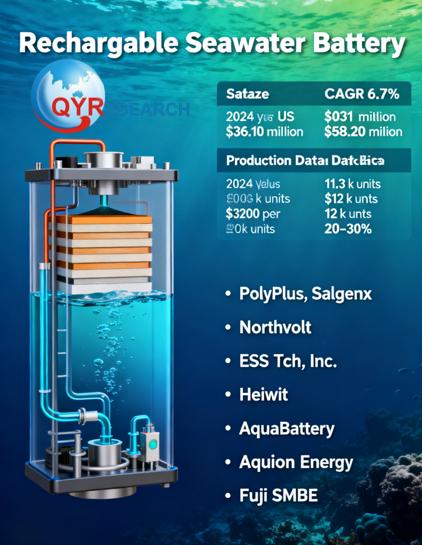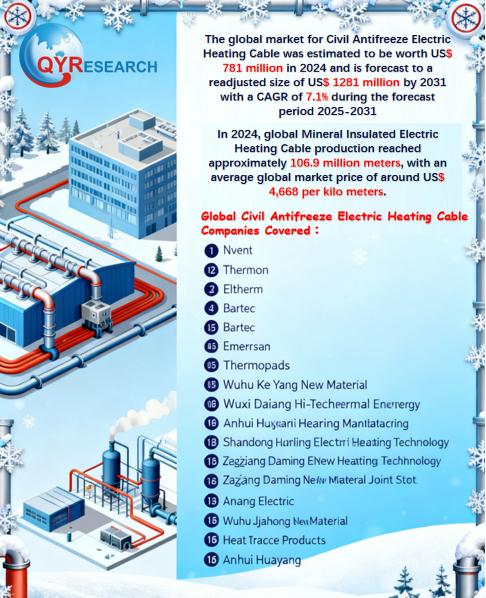Press release
Decarbonization technology:Axle Energy Secures $9M in Seed Funding to Advance Energy Grid Decarbonization
Axle Energy Secures $9M in Seed Funding to Advance Energy Grid DecarbonizationPorto, Portugal - August 1, 2024 London-based Axle Energy has raised $9 million in seed funding, bringing its total funding to over $10 million. The investment, led by Accel with participation from Picus Capital and Eka Ventures, will facilitate the expansion of Axle Energy's team and its growth across the European energy market.
Axle Energy's platform connects flexible energy assets like EVs, home batteries, and heat pumps to local and national energy markets, enhancing grid resilience and reducing costs for consumers. The company, founded in 2023 by Karl Bach and Archy de Berker, aims to decarbonize the power grid by integrating these assets into flexibility markets.
Karl Bach, CEO, emphasized the importance of utilizing home assets to stabilize the power grid and reduce reliance on fossil fuels. Axle Energy's partnerships with manufacturers such as SolarEdge and myenergi are pivotal in providing clean flexibility to the grid.
The funding aligns with the UK's pledge for zero-carbon electricity by 2030 and the EU's long-term carbon-neutrality goals by 2050.
Policy Analysis
Europe is at the forefront of global efforts to decarbonize its economy, driven by comprehensive policies aimed at reducing greenhouse gas emissions and transitioning to a sustainable energy system. Key policy frameworks and strategic initiatives are shaping this transformation:
1.Net-Zero Industry Act (NZIA): The NZIA, adopted by the EU Council in May 2024, establishes measures to strengthen Europe's net-zero technology manufacturing ecosystem. It aims to expedite the deployment of technologies critical for achieving net-zero emissions, such as renewable energy sources, energy storage solutions, and electric mobility. This act is crucial for ensuring that Europe can meet its ambitious climate targets and support the global decarbonization agenda.
2.EU's 2030 Climate Target Plan: The EU has committed to reducing greenhouse gas emissions by at least 55% by 2030 compared to 1990 levels. This target is part of the broader European Green Deal, which seeks to make Europe the first climate-neutral continent by 2050. Policies under this plan include enhancing energy efficiency, increasing the share of renewable energy, and promoting sustainable transportation.
3.Nuclear Power as a Strategic Technology: In February 2024, the European Parliament and the Council of EU member states officially labeled nuclear power as a strategic technology for the EU's decarbonization efforts. This decision underscores the role of nuclear energy in providing a stable and low-carbon energy supply, complementing renewable energy sources and helping to achieve the EU's climate goals.
4.Industrial Decarbonisation Strategy: This strategy outlines a vision for a competitive, greener future for Europe's manufacturing and construction sectors. It includes significant investments in green technologies, such as carbon capture, usage, and storage (CCUS), and hydrogen. The strategy also emphasizes the importance of reducing emissions in hard-to-abate industries and improving energy efficiency across public and commercial buildings.
5.Support for Innovation and Infrastructure: Europe is investing heavily in innovation and infrastructure to support the transition to a decarbonized economy. This includes funding for projects that improve energy efficiency, develop low-carbon technologies, and enhance the resilience of energy systems. These investments are designed to spur economic growth, create jobs, and reduce dependence on fossil fuel imports.
Market Overview
Market Size and Growth
The European decarbonization technology market is experiencing robust growth, driven by stringent climate policies and significant investments in sustainable technologies. The market is projected to grow at a compound annual growth rate (CAGR) of 10.7% from 2024 to 2030. This growth is fueled by the EU's ambitious targets to achieve net-zero emissions by 2050, which necessitate substantial shifts in energy production and consumption patterns.
Consumer and Market Dynamics
Consumer preferences are shifting towards more sustainable products and services, influencing market dynamics. This trend is evident in the increased adoption of electric vehicles, demand for green building materials, and interest in sustainable finance products. Companies that align their offerings with these preferences are likely to gain a competitive advantage and capture a larger market share.
Key Technologies and Innovations
1.Carbon Capture and Storage (CCS): CCS remains a pivotal technology in the decarbonization toolkit, particularly for hard-to-abate sectors like cement and steel. The EU has seen significant advancements in CCS projects, supported by both public and private investments.
2.Hydrogen: Green hydrogen production is gaining traction, supported by EU policies and funding. Hydrogen is seen as a critical component for decarbonizing industrial processes and heavy transportation.
3.Renewable Energy Integration: The integration of renewable energy sources into the grid and industrial processes is accelerating. Investments in solar, wind, and battery storage technologies are essential for reducing reliance on fossil fuels and ensuring a stable energy supply.
Sectoral Developments
1.Steel and Aluminum: Companies are scaling up low-emissions production capacities, with technologies like direct-reduction coupled with electric arc furnaces becoming popular due to their cost-effectiveness and reduced carbon footprints.
2.Petrochemicals: Innovations such as electric crackers are emerging, although large-scale deployment remains limited. The focus is on recycling and using sustainable plastics to reduce emissions.
3.Built Environment: Energy efficiency measures and electrification of heating systems in buildings are key strategies. The adoption of low-carbon technologies in construction is critical for meeting decarbonization targets.
Challenges and Opportunities
While the market is growing, challenges such as high costs of new technologies, regulatory hurdles, and the need for infrastructure development remain. However, these challenges also present opportunities for innovation and leadership in green technologies. The involvement of institutional investors and the implementation of supportive policies are crucial for overcoming these barriers and accelerating the transition to a low-carbon economy.
Regulation Differences
1. EU-Wide Frameworks and Regulations
The European Union has implemented several overarching frameworks to drive decarbonization efforts across its member states. Key regulations include:
Corporate Sustainability Reporting Directive (CSRD): This directive requires companies to report on their sustainability practices, including emissions tracking and reduction targets. It mandates transparency in sustainability efforts and applies double materiality principles to assess and report both financial and environmental impacts. This regulation is crucial for ensuring that companies across Europe align with decarbonization goals and provides a unified reporting standard.
Emissions Trading System (ETS): The ETS is a cornerstone of the EU's climate policy, setting a cap on the total amount of greenhouse gases that can be emitted by covered entities. Companies must hold allowances equal to their emissions, incentivizing reductions. Recent expansions include coverage for maritime transport starting in 2025 and the progressive phase-out of free allowances by 2034.
Carbon Border Adjustment Mechanism (CBAM): CBAM addresses carbon leakage by imposing a carbon price on imports of carbon-intensive goods, such as steel, aluminum, and cement. Starting in 2026, it aims to level the playing field between EU producers and foreign competitors and encourages global decarbonization efforts by making carbon costs explicit in trade.
2. National and Regional Variations
While EU-wide regulations set a baseline, individual countries have tailored their strategies to address specific national priorities and contexts:
Germany: Germany has adopted aggressive decarbonization targets and is a leader in renewable energy deployment. The country's National Hydrogen Strategy, launched in 2020, aims to make Germany a global leader in green hydrogen technology. Additionally, Germany's Carbon Contracts for Difference (CCfD) support industrial decarbonization projects by covering the cost difference between conventional and low-carbon technologies.
France: France's Energy Transition for Green Growth Act focuses on reducing reliance on nuclear power while increasing renewable energy production. France also supports building renovations to improve energy efficiency and has set stringent targets for reducing emissions in the transportation sector.
Nordic Countries: Countries like Denmark, Sweden, and Finland have implemented comprehensive climate laws targeting net-zero emissions well before 2050. These nations are focusing on electrification, renewable energy, and carbon capture and storage (CCS) technologies. Denmark, for instance, aims to reduce its emissions by 70% by 2030 compared to 1990 levels.
3. Sector-Specific Regulations
Buildings: The Energy Performance of Buildings Directive (EPBD) sets minimum energy performance standards for buildings across the EU, aiming for a fully decarbonized building stock by 2050. National measures vary, with countries developing specific criteria and incentives for energy-efficient renovations and new constructions.
Transport: The ReFuelEU Aviation and FuelEU Maritime regulations mandate the use of sustainable fuels in aviation and maritime sectors. Countries implement these regulations differently based on their specific infrastructure and economic contexts
Key Drivers
The decarbonization technology industry in Europe is being driven by several key factors:
1.Technological Advancements: Significant progress in technologies such as solar panels and batteries has dramatically reduced costs and improved efficiency. For example, the costs of solar panels and batteries have fallen by over 99% in the last two decades, making renewable energy solutions more financially attractive.
2.Economic Incentives: The financial benefits of decarbonization technologies are becoming increasingly apparent. These technologies not only offer environmental benefits but also provide economic advantages such as cost savings and new revenue streams. Companies can capitalize on new flexibility markets and grow their revenue by connecting to these emerging markets.
3.Corporate and Industrial Alignment: There is a growing alignment among corporate and industrial sectors towards decarbonization. Companies are adopting holistic approaches to transition to renewable energy sources, driven by both regulatory requirements and the desire to reduce operational costs and enhance sustainability.
4.Public and Private Investment: There is a significant increase in investments from both public and private sectors to support decarbonization efforts. Seed funding, venture capital, and government subsidies are fueling innovation and the deployment of clean energy technologies across Europe.
5.Innovation and Research: Continuous innovation and research are critical drivers. Advances in materials science, such as the exploration of alternatives to lithium for batteries, and improvements in energy storage and grid management technologies are essential for the successful transition to a low-carbon economy.
Investment Opportunities
The decarbonization technology industry in Europe presents several compelling investment opportunities driven by regulatory support, technological advancements, and economic incentives. Here are some key areas for potential investment:
1.Renewable Energy Generation: The EU is significantly increasing its investment in renewable energy, particularly in solar and wind power. For example, Spain has seen a surge in solar power adoption, leading to lower electricity prices. Investment in renewables in the EU reached almost USD 110 billion in 2023, with a continued upward trend expected.
2.Energy Storage Solutions: With the growing integration of renewable energy sources, efficient energy storage systems are crucial. Investments in battery storage are expected to exceed USD 50 billion in 2024, driven by technological advancements and increasing demand for grid stability.
3.Electric Vehicles (EVs) and Infrastructure: The European EV market is expanding rapidly, supported by strong sales and government incentives. Investment in EV infrastructure, including charging stations and grid enhancements, presents a substantial opportunity. The number of battery electric vehicles (BEVs) is projected to grow significantly, necessitating extensive infrastructure development.
4.Green Hydrogen Production: As a versatile and clean energy carrier, green hydrogen is gaining traction in Europe. Germany, among other countries, is investing heavily in green hydrogen to support its industrial decarbonization goals. The production and distribution of green hydrogen offer lucrative investment prospects.
5.Energy Efficiency and Building Electrification: Upgrading buildings for energy efficiency and electrification is another key area. Investment in energy-efficient technologies and retrofitting existing structures can yield high returns by reducing energy consumption and emissions.
6.Smart Grid Technologies: Modernizing the electrical grid to handle decentralized and variable renewable energy sources is critical. Investment in smart grid technologies, including advanced metering infrastructure and grid management systems, is essential for a resilient and flexible energy system .
Related Market Reports From QY Research
QY Research Releases Comprehensive Market Reports on the Decarbonization technology Market, as shown in the links below. These reports provide an in-depth analysis of the current market landscape, key trends, and future growth opportunities.
Global Decarbonization-as-a-Service Market Insights, Forecast to 2030
https://www.qyresearch.com/reports/3243908/decarbonization-as-a-service
Global Decarbonator Market Research Report 2024
https://www.qyresearch.com/reports/2461187/decarbonator
Global Decarbonization Software Market Research Report 2024
https://www.qyresearch.com/reports/3243477/decarbonization-software
Global Decarbonized Hydrogen Market Insights, Forecast to 2030
https://www.qyresearch.com/reports/3106914/decarbonized-hydrogen
About Us:
QYResearch founded in California, USA in 2007, which is a leading global market research and consulting company. Our primary business include market research reports, custom reports, commissioned research, IPO consultancy, business plans, etc. With over 17 years of experience and a dedicated research team, we are well placed to provide useful information and data for your business, and we have established offices in 7 countries (include United States, Germany, Switzerland, Japan, Korea, China and India) and business partners in over 30 countries. We have provided industrial information services to more than 60,000 companies in over the world.
Contact Us:
If you have any queries regarding this report or if you would like further information, please contact us:
QY Research Inc.
Add: 17890 Castleton Street Suite 369 City of Industry CA 91748 United States
EN: https://www.qyresearch.com
Email: global@qyresearch.com
Tel: 001-626-842-1666(US)
JP: https://www.qyresearch.co.jp
This release was published on openPR.
Permanent link to this press release:
Copy
Please set a link in the press area of your homepage to this press release on openPR. openPR disclaims liability for any content contained in this release.
You can edit or delete your press release Decarbonization technology:Axle Energy Secures $9M in Seed Funding to Advance Energy Grid Decarbonization here
News-ID: 3609921 • Views: …
More Releases from QY Research Inc.

Rechargeable Seawater Battery - Global Market Share and Ranking, Overall Sales a …
The global market for Rechargeable Seawater Battery was estimated to be worth US$ 36.10 million in 2024 and is forecast to a readjusted size of US$ 58.29 million by 2031 with a CAGR of 6.7% during the forecast period 2025-2031.
Global Leading Market Research Publisher QYResearch announces the release of its latest report "Rechargeable Seawater Battery - Global Market Share and Ranking, Overall Sales and Demand Forecast 2025-2031". Based on current…

Antibacterial Wound Dressing - Global Market Share and Ranking, Overall Sales an …
The global market for Antibacterial Wound Dressing was estimated to be worth US$ 287 million in 2024 and is forecast to a readjusted size of US$ 397 million by 2031 with a CAGR of 5.1% during the forecast period 2025-2031.
Global Leading Market Research Publisher QYResearch announces the release of its latest report "Antibacterial Wound Dressing - Global Market Share and Ranking, Overall Sales and Demand Forecast 2025-2031". Based on current…

Semiconductor Wafer Slicing Equipment - Global Market Share and Ranking, Overall …
Unlock the Future of the Semiconductor Wafer Slicing Equipment Market: Comprehensive Global Market Report 2025-2031
Global leading market research publisher QYResearch published the release of its latest report, "Semiconductor Wafer Slicing Equipment - Global Market Share, Ranking, Sales, and Demand Forecast 2025-2031". This in-depth report provides a complete analysis of the global Semiconductor Wafer Slicing Equipment market, offering critical insights into market size, share, demand, industry development status, and future forecasts.…

Civil Antifreeze Electric Heating Cable Market by Types, Applications, Manufactu …
Unlock the Future of the Civil Antifreeze Electric Heating Cable Market: Comprehensive Global Market Report 2025-2031
Global leading market research publisher QYResearch published the release of its latest report, "Civil Antifreeze Electric Heating Cable - Global Market Share, Ranking, Sales, and Demand Forecast 2025-2031". This in-depth report provides a complete analysis of the global Civil Antifreeze Electric Heating Cable market, offering critical insights into market size, share, demand, industry development status,…
More Releases for Europe
2019 Strategy Consulting Market Analysis | McKinsey, The Boston Consulting Group …
Strategy Consulting Market reports also offer important insights which help the industry experts, product managers, CEOs, and business executives to draft their policies on various parameters including expansion, acquisition, and new product launch as well as analyzing and understanding the market trends
Need for strategic planning in highly competitive environment and to develop business capabilities to meet & exceed the emerging requirements are the major drivers which help in surging…
Strategy Consulting Market 2025 | Analysis By Top Key Players: Booz & Co. , Rola …
Global Strategy Consulting Market 2019-2025, has been prepared based on an in-depth market analysis with inputs from industry experts. This report covers the market landscape and its growth prospects over the coming years. The report also includes a discussion of the key vendors operating in this market.
The key players covered in this study
McKinsey , The Boston Consulting Group , Bain & Company , Booz & Co. , Roland Berger Europe…
Digital Strategy Consulting Market is Thriving Worldwide with Deloitte, McKinsey …
A Digital Strategy is a form of strategic management and a business answer or response to a digital question, often best addressed as part of an overall business strategy. A digital strategy is often characterized by the application of new technologies to existing business activity and focus on the enablement of new digital capabilities to their business.
A new report as a Digital Strategy Consulting market that includes a comprehensive analysis…
Strategy Consulting Market 2019: By McKinsey, The Boston Consulting Group, Bain …
This report studies the global Strategy Consulting market, analyzes and researches the Strategy Consulting development status and forecast in United States, EU, Japan, China, India and Southeast Asia. This report focuses on the top players in global market, like
• McKinsey
• The Boston Consulting Group
• Bain & Company
• Booz & Co.
• Roland Berger Europe
• Oliver Wyman Europe
• A.T. Kearney Europe
• Deloitte
• Accenture Europe
Get Sample Report@ https://www.reporthive.com/enquiry.php?id=1247388&req_type=smpl&utm_source=AB
Market segment by Type, the product can be split into
• Operations Consultants
• Business Strategy Consultants
• Investment Consultants
• Sales and…
Strategy Consulting Market Analysis 2018: McKinsey, The Boston Consulting Group, …
Orbis Research Present’s “Global Strategy Consulting Market” magnify the decision making potentiality and helps to create an effective counter strategies to gain competitive advantage.
The global Strategy Consulting status, future forecast, growth opportunity, key market and key players. The study objectives are to present the Strategy Consulting development in United States, Europe and China.
In 2017, the global Strategy Consulting market size was million US$ and it is expected to reach million…
Influenza Vaccination Market Global Forecast 2018-25 Estimated with Top Key Play …
UpMarketResearch published an exclusive report on “Influenza Vaccination market” delivering key insights and providing a competitive advantage to clients through a detailed report. The report contains 115 pages which highly exhibits on current market analysis scenario, upcoming as well as future opportunities, revenue growth, pricing and profitability. This report focuses on the Influenza Vaccination market, especially in North America, Europe and Asia-Pacific, South America, Middle East and Africa. This…
